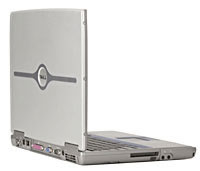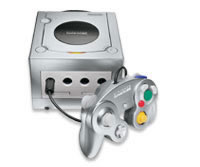 New research from UK High Street bank Halifax reveals that over half of children between the ages of seven to sixteen years old have bought something over the Internet.
New research from UK High Street bank Halifax reveals that over half of children between the ages of seven to sixteen years old have bought something over the Internet.
Boys are particularly keen on Web shopping with over 60% saying that they’ve bought items over the Internet.
The bank’s survey found that some 53% of young people are Internet shoppers (up 10% from 43% in 2004) with Scottish lads and lassies coming out as the keenest Web shoppers, with 80% buying items over the internet.
The East Midlands region came bottom of the Internet shopping league with only 36% of young people in the area shopping online.
Boys continue to buy more goods over the Internet than girls, with this year’s figures – 60% boys compared to just 46% of girls – continuing last year’s trend where the figures were 50% and 37% respectively.
 Not surprisingly, age plays a big part in who gets to shop online with less than a third of seven to eleven year olds (29%) clicking and buying compared to almost three quarters of twelve to sixteen year olds (73%).
Not surprisingly, age plays a big part in who gets to shop online with less than a third of seven to eleven year olds (29%) clicking and buying compared to almost three quarters of twelve to sixteen year olds (73%).
More than half of all kids interviewed believed that Internet shopping is, like, waaaaaay better to shopping on the high street with 61% finding it easier to buy online rather than in shops for certain items.
Music, DVDs and electronic equipment are the biggest attractions online with kids spending their hard-earned extortion racket earnings, petty theft cash, pocket money on CDs (45%), computer games/equipment (45%) and DVDs/videos (43%).
 Long shunned as hobby-obsessed lonely losers living in messy bedrooms with a dreadful taste in music, geeks, computer spods and sci-fi nuts have revealed themselves as a lucrative target for advertisers.
Long shunned as hobby-obsessed lonely losers living in messy bedrooms with a dreadful taste in music, geeks, computer spods and sci-fi nuts have revealed themselves as a lucrative target for advertisers. The bigwigs of Sci-Fi conducted the research to try and work out the popularity of the multi-billion dollar genre when it was supposedly the province of “solitary, unpopular individuals with niche interests and questionable personal hygiene habits.”
The bigwigs of Sci-Fi conducted the research to try and work out the popularity of the multi-billion dollar genre when it was supposedly the province of “solitary, unpopular individuals with niche interests and questionable personal hygiene habits.” The bit that will get the advertisers moist in their strap lines is the fact that geeks are 90% more likely to be the first among their chums to invest in new products.
The bit that will get the advertisers moist in their strap lines is the fact that geeks are 90% more likely to be the first among their chums to invest in new products. According to a survey by Entertainment Media Research, UK legal digital music downloads have grown by a thumping great 75% in a year.
According to a survey by Entertainment Media Research, UK legal digital music downloads have grown by a thumping great 75% in a year. These findings are supported by the news that legal digital downloads have accounted for 8% of Coldplay’s recent album sales in the US – the biggest share for any new release to date.
These findings are supported by the news that legal digital downloads have accounted for 8% of Coldplay’s recent album sales in the US – the biggest share for any new release to date. Two fifths of those surveyed preferred digital downloads because they were only interested in one or two tracks, while 29% downloaded music to sample an album before purchase.
Two fifths of those surveyed preferred digital downloads because they were only interested in one or two tracks, while 29% downloaded music to sample an album before purchase. According to a survey carried out over the Easter period by network management company, Ipswitch, a thumping 93% of all e-mail received was unwanted spam.
According to a survey carried out over the Easter period by network management company, Ipswitch, a thumping 93% of all e-mail received was unwanted spam. A government-backed study has revealed that more than one in 10 UK teenagers frequently use the Internet to look at “adult-only” Web sites.
A government-backed study has revealed that more than one in 10 UK teenagers frequently use the Internet to look at “adult-only” Web sites. When it came to trusting the media, television was seen as the most trustworthy form of mass communication, with 48% trusting it completely or a lot.
When it came to trusting the media, television was seen as the most trustworthy form of mass communication, with 48% trusting it completely or a lot. Worldwide shipments of PCs rose by 10.3 percent in the first quarter, with global shipments increasing to 50.4 million units, up from the 45.7 million PCs shifted during the same period a year ago.
Worldwide shipments of PCs rose by 10.3 percent in the first quarter, with global shipments increasing to 50.4 million units, up from the 45.7 million PCs shifted during the same period a year ago. The report notes that lower vendor prices and the strong Euro to the dollar exchange rate helped open up small business wallets over Europe.
The report notes that lower vendor prices and the strong Euro to the dollar exchange rate helped open up small business wallets over Europe. In the US market – the biggest in the world – Apple shimmied up to fifth position, elbowing Toshiba down a place.
In the US market – the biggest in the world – Apple shimmied up to fifth position, elbowing Toshiba down a place. A study by Nielsen Entertainment has revealed that men spend more money on video games than they do on music, adding weight to a growing belief that video games are displacing other forms of media for the notoriously fickle attentions of young men.
A study by Nielsen Entertainment has revealed that men spend more money on video games than they do on music, adding weight to a growing belief that video games are displacing other forms of media for the notoriously fickle attentions of young men. Naturally, advertisers are keen to cash in on the rising popularity of games, and are looking at ever more persuasive ways to bombard bedroom-bound, bunglesome boys with beguiling adverts (branded billboards in race games are already commonplace, as we’ve
Naturally, advertisers are keen to cash in on the rising popularity of games, and are looking at ever more persuasive ways to bombard bedroom-bound, bunglesome boys with beguiling adverts (branded billboards in race games are already commonplace, as we’ve  Overall, Nielsen reported that active gamers tend to spend just over 5 hours a week playing alone and 3 hours a week playing with people or online.
Overall, Nielsen reported that active gamers tend to spend just over 5 hours a week playing alone and 3 hours a week playing with people or online. Shipments of MP3 players soared by an enormous 116% in 2004, as hundreds of wallet-tempting products arrived in response to the phenomenal success of Apple iPod player, according to a survey by Market Intelligence firm, iSuppli.
Shipments of MP3 players soared by an enormous 116% in 2004, as hundreds of wallet-tempting products arrived in response to the phenomenal success of Apple iPod player, according to a survey by Market Intelligence firm, iSuppli. The iSuppli report also predicts that HDD-based MP3 player shipments will grow by a CAGR of 41.8% from 2004 to 2009, as compared to 22.9% for flash-based players.
The iSuppli report also predicts that HDD-based MP3 player shipments will grow by a CAGR of 41.8% from 2004 to 2009, as compared to 22.9% for flash-based players. DVRs may well be the hot product in the home entertainment industry, but dusty old video cassettes still rule the roost in the US.
DVRs may well be the hot product in the home entertainment industry, but dusty old video cassettes still rule the roost in the US. However, take up is still very low compared to many other consumer electronics products: just 6% of all US households have a DVR, compared to the 87% with a VCR, 60% with a DVD console and 12% with Video on Demand (VOD).
However, take up is still very low compared to many other consumer electronics products: just 6% of all US households have a DVR, compared to the 87% with a VCR, 60% with a DVD console and 12% with Video on Demand (VOD). The European Parliament has voted in favour of a new programme to promote the European digital content market, setting it a budget of €149m (~$194m, ~£103m) for the next three years.
The European Parliament has voted in favour of a new programme to promote the European digital content market, setting it a budget of €149m (~$194m, ~£103m) for the next three years.